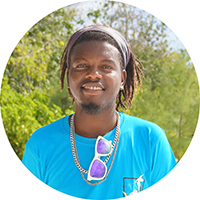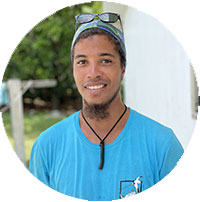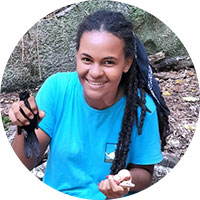This granitic island and surrounding sea area was made a Nature Reserve when it was bought in 1968 by the International Council for Bird Preservation (now BirdLife International) in order to protect the last tiny population of a near extinct endemic bird species, the Seychelles warbler (Acrocephalus seychellensis). The entire island, including the 400 metres of water surrounding the island, was also declared a ‘Special Reserve’ by the Seychelles Government in 1975. The island is managed by Nature Seychelles since 1998.
The little bird that saved an island
In 1959, the Seychelles warbler population was thought to number only 26 individuals all restricted to Cousin.
When ICBP took over the island, most of the native habitat had been largely converted to a coconut and cinnamon plantation. The remnant population of Seychelles warbler was clinging on in a mangrove swamp, providing less than ideal habitat for the species.
An intensive conservation programme was soon underway: the island’s coconuts were cut back, allowing the native Pisionia grandis forest favoured by the warbler to flourish once again. By 1982, the warbler population had reached around 320 adults, the maximum population that Cousin could support. From here the warbler was re-introduced to other islands in the Seychelles to boost its population and the bird now occurs on four other islands in the Seychelles and numbers over 3000 individuals. The bird was reclassified as “Near Threatened” from “Critically Endangered” in the Red List in 2015 and is one of the World’s greatest conservation success stories in recent times.
“In 1969, the Red List said the Seychelles warbler could well become extinct in our time. Now we can say the Seychelles warbler was saved in our time.
– Dr. Nirmal Shah, Nature Seychelles’ Chief Executive.
Seychelles magpie robin and other species
The transformation of the island from an ecologically impoverished coconut plantation into a thriving indigenous forest also benefitted other species notably the Seychelles Magpie Robin, Copsychus sechellarum. The first step in the rescue of the this bird, also once on the brink of extinction and clinging to life on Fregate Island, was the establishment of a population on Cousin. Other bird transfers to and from islands have been carried out and it now survives on five islands.
Cousin is a huge conservation success. The previous coconut plantation is now mainly a native forest dominated by Pisonia grandis, Morinda citrifolia and Ochrosia oppositifolia. There is a wetland where fresh water attracts dragonflies and moorhens; the hill creates ideal nesting sites for shearwaters and bridled terns; on the seashore, crabs and shorebirds abound. It is home to a number of reptiles such as giant tortoises and five endemic lizards, giant millipedes and hermit crabs. Seven species of nesting seabirds call Cousin home.
Meet the team
Since 1998, Cousin is managed by Nature Seychelles, the BirdLife Partner in Seychelles. Nature Seychelles is a leading, award winning, non-profit Association registered under the laws of Seychelles. We have successfully implemented many outstanding projects in Seychelles and work with regional and international partners and donors. Nature Seychelles’ Head Office is located on Mahe at the Centre for Environment and Education at Roche Caiman.
Cousin Island is our core project and is run by a team of committed local and expatriate staff made up of:










